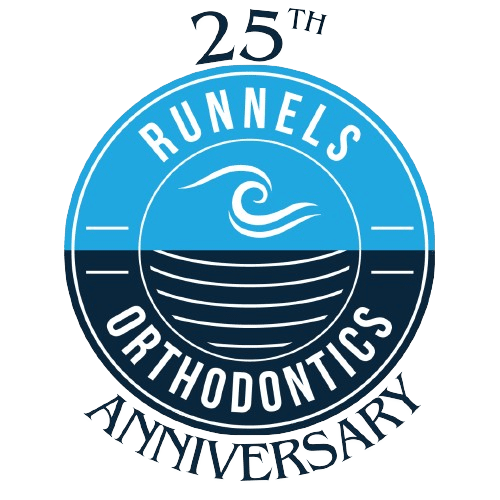Subtle or severe, recent development or old, every occurrence of open bite carries with it the potential to cause a number of issues down the road.
We’re referring not only to the most glaringly obvious problem—the aesthetic concern—but to a range of functionally limiting and potentially painful problems that result from untreated open bite.
Not all open bites produce pain or dysfunction at first, but even in these cases, long-term issues can still surface.
At Runnels Orthodontics, we’re committed not only to providing the best treatment programs for this common malocclusion, but also to educating every patient so they can make confidently informed decisions on their own care.
With that in mind, read on for a complete guide on what open bites are and how they can negatively impact your health and well-being.
What Exactly Is an Open Bite?
Simply put, an open bite is a misalignment of the teeth that leaves a gap between the upper and lower teeth when the mouth rests in a closed position.
The most common form of open bite is an anterior open bite, which refers to instances in which the gap is observed in the front teeth. With a posterior open bite, the front teeth overlap normally while the back teeth present a gap.
How Does an Open Bite Develop?
Genetics, certain habits or activities, traumatic injury, and disorders can all encourage the development of an open bite. Read on for a brief overview of each of these causes.
Genetic factors that can cause open bite include inherited traits relating to your jaw and facial structure. In other words, if a parent had an open bite, and the cause was not related to an injury or their habits, you are at a greater risk of developing the same issue.
Habits and activities that encourage the formation of an open bite include thumb-sucking or pacifier use that persists beyond the age of 4 years old, tongue thrust (a habit of pushing the tongue forward while speaking or swallowing), and prolonged bottle or sippy cup use. Mouth breathing, whether due to sinus issues, allergies, or similar issues, can also cause an open bite.
Traumatic injuries and various disorders, including TMJ disorders, can affect the alignment and structure of the teeth and jaws in such a way that encourages an open bite.
This is not an exhaustive list of open bite causes, and sometimes, more than one factor is involved.
The Practical and Painful Pitfalls of Open Bites
As mentioned, open bites not only cause aesthetic disturbances, but can also affect the basic functionality of your jaw, as well as your comfort and your confidence in various ways.
#1: Eating Difficulties
Most of us take the ability to bite and chew for granted, but for people with moderate or severe open bite, it is a conscious and often uncomfortable effort. This can be an issue with both anterior and posterior open bites, but typically, people with posterior open bites experience greater difficulty when eating.
When left unchecked, an open bite can limit the number of foods you can comfortably eat. Even when working within these limitations, you may still encounter digestive problems resulting from not chewing your food sufficiently.
#2: Jaw Pain and TMJ
The “hinge” that connects your jaw to your skull, the temporomandibular joint, is like any other joint in that it is only capable of withstanding certain stressors. In the same way that holding a heavy power drill with an improper grip can cause lateral epicondylitis (tennis elbow) over time, a misaligned bite can cause temporomandibular joint pain and dysfunction.
TMJ disorders are characterized by clicking, popping, pain and other uncomfortable symptoms affecting this joint, as well as headaches, neck pain, and difficulty chewing.
#3: Speech Impediments
Take a moment to make a prolonged “s” sound with your mouth, as if you’re imitating a snake’s hiss. Can you see the importance of overlapping front teeth in producing that sound? If you were to try to repeat the sound with a gap between your top and bottom teeth, you would probably be forced to insert your tongue in between, making more of a “th” sound.
This is why one of the most common speech impediments among people with open bites is a lisp. There are, however, sounds other than “s” and “z” that may be difficult to pronounce, including “d,” “n,” and “t.”
#4: Premature Tooth Wear
In any machine, when parts that aren’t supposed to touch make contact consistently, you can expect at least one or two consequences down the line. The teeth are no different, as the uneven bite pressure caused by an open bite can cause chipping or cracking of teeth, increased tooth sensitivity, and other uncomfortable problems.
#5: Gum Health
The last stop along our tour of open bite woes (though there are plenty more) is the gum health issue.
With anterior open bites especially, if the problem is severe enough that the lips do not fully close when the mouth is in a resting position, then mouth breathing results, which dries out oral tissues.This significantly increases your risk of developing gum inflammation, tooth decay, and bad breath, among other issues.
Need to Fix an Open Bite?
Whether you’ve just noticed it or if you’ve been dealing with an open bite for most of your life, our team at Runnels Orthodontics proudly provides the Destin, Santa Rosa, Rosemary Beach, and surrounding areas with industry-leading orthodontic care, including open bite correction.
Contact us today for a consultation, and we’ll work with you to restore a healthy, beautiful smile.


